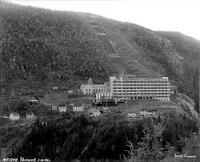I manage the dining hall at a boarding school that has
nearly 400 students. Periodically, we have issues with the kids not taking
their soiled dishes to the dish room or other such minor infractions. We have
one young man who is a chronic offender, and he tends to sit at the same table
for each of his meals. A couple of weeks ago, one of my staff discovered that “his”
table had been left particularly messy after lunch. In order to confirm which
student was responsible I had her look through the pictorial directory to
identify who had been sitting there. She selected this young man.
There was only one problem. He hadn’t been at school that
day.
So much for eyewitness testimony.

Dr. Elizabeth Murray, a forensic anthropologist, and an
instructor at College of Mount St. Joseph, has issued two video courses about
forensics through The Teaching Company. Here is a paraphrase of what she says
about human memory:
·
Memory is not a video recorder, where everything
is seen in the mind’s eye objectively and exactly as it happened. A memory is
more of an impression of an event.
·
Depending on our past experience, our brains put
different things we’ve experienced into different categories for future recall.
When an event occurs that fits one of our schema, our brain pulls out all of the
bits of that schema to process the new information and the overlap can mix
things up a bit.
·
There are two stages of memory: 1) short-term
memory involves the information our brain doesn’t process for future recall
because it’s seen an unimportant, and 2) long-term or permanent memory where
information is seen as important and therefore stored for future recall.
The key to whether or not we remember an event or person
depends on how our brain dealt with the relevant information at the time of the
event, and there are many variables that affect this processing such as our beliefs,
motives, stress, stereotypes, and environmental factors. In addition, studies
have shown that some faces are easier to remember than others. Also, some
people are simply better with faces than others. You might not be surprised to
discover that the amount of time between the event and when it’s recalled
affects the way something is remembered.
Currently, the federal standard for eyewitness testimony in
court is that if a witness is very sure of his or her testimony, it is admissible
in court. If there is any amount of uncertainty, it’s up to the judge to decide
whether it’s allowed or not.
However, studies have shown that the degree of certainty of
a witness doesn’t necessarily correlate with the reliability of his or her
testimony!



































